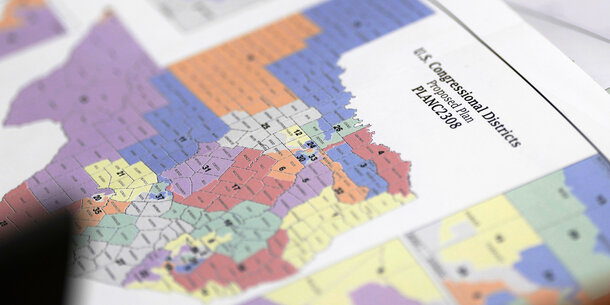The Census Bureau will soon release its once-a-decade reapportionment counts, the population totals used to determine how many seats each state receives in the House of Representatives. Many legal battles have been fought to help ensure that the apportionment numbers and other census data will be full, fair, and accurate. Other lawsuits, however, may endanger the fairness and accuracy of the count.
The stakes could not be higher: the 2020 Census dictates not just congressional apportionment, but also the redrawing of election districts around the country and the allocation of $1.5 trillion in federal funds annually for the next 10 years. Accurate census numbers are essential to ensuring that communities across the nation have equitable access to essential services like healthcare, food, and education and the chance to elect their representatives of choice.
The Census Bureau plans to put out the apportionment numbers sometime between April 26 and April 30. Here’s where census litigation stands in the run-up to that release.
Challenges to the census timelines
Last April, as the Covid-19 pandemic was spreading across the United States, the Census Bureau introduced a plan to protect the health and safety of the public while still ensuring that it could conduct an accurate count. The bureau’s plan paused the start of all 2020 Census counting methods that required face-to-face contact. It also extended the timelines for calculating the apportionment and for producing redistricting data to the states by four months each. The apportionment data release moved from December 31, 2020, to April 30, 2021, and the redistricting data release from March 31, 2021, to July 31, 2021.
In July 2020, President Trump announced his desire to implement an illegal plan to exclude undocumented people from the apportionment base — multiple federal district courts later ruled that such exclusion would violate the Constitution and other federal law. The plan directed the Commerce Department, which houses the Census Bureau, to provide him two sets of numbers: the state population totals for apportionment and data about the citizenship status of every person in the country.
Two weeks after Trump announced his exclusion plan, the Census Bureau suddenly and without explanation announced that it was cutting the time for collecting and processing 2020 Census data in half and would deliver the apportionment to Trump by the end of 2020. The bureau’s rushed plan went directly against its own statements about the significant risks a condensed census process would create for the accuracy of the final data.
The rush posed a grave threat to counting people of color in the census because many of the steps the bureau intended to cut short are designed specifically to ensure a full count of hard-to-count populations like communities of color and young children.
A coalition of civil rights groups, American Indian nations, and local governments and officials, represented by the Brennan Center, the Lawyers’ Committee for Civil Rights Under Law, and the law firm Latham & Watkins LLP, sued the Commerce Department and the Census Bureau in August 2020. The lawsuit claimed that the Census Bureau violated its constitutional duty to make census-related decisions that “bear a reasonable relationship to the accomplishment of an actual enumeration of the population” when it abandoned its Covid-19 plan.
The lawsuit, National Urban League v. Raimondo (originally filed as National Urban League v. Ross), also argued that the bureau’s unexplained decision to cut the census short violated statutory requirements for agencies to give clear, evidence-based reasons for their actions. The real reason for the rush, the complaint alleged, was to guarantee that Trump would still be in office when the population totals were provided. By shortening the census timelines, the Trump administration was trying to preserve the president’s opportunity to implement his exclusion policy and suppress the political power of communities of color.
The court ordered the data-collection phase of the census to continue through October 15 — more than two weeks longer than the rushed plan. Only a late emergency ruling from the Supreme Court prevented the count from running until October 31, the full time the bureau had originally asked for in its Covid-19 plan.
In mid-January, the challengers obtained a stipulation and order barring the bureau from releasing apportionment data prior to Inauguration Day, effectively preventing the Trump administration from manipulating the numbers. And in early February, they obtained a legally enforceable promise from the federal government that apportionment data would not be released before April 16, 2021, ensuring the bureau most of the time it had originally indicated it needed in light of the coronavirus pandemic to process, spot errors in, and correct the apportionment data.
On April 22, the district court approved a stipulated dismissal preventing the Census Bureau from producing apportionment data before April 26. Under the terms of the dismissal, the bureau agreed not to factor any citizenship data that it may have collected under the previous administration into its apportionment or redistricting numbers. And the bureau agreed to declare that any citizenship-data products that it was creating to help Trump’s plans to exclude undocumented people are statistically unfit for use for apportionment or redistricting purposes. The bureau is also obligated to produce certain metrics about the quality of upcoming 2020 Census data releases and hold public briefings about those metrics.
Meanwhile, two lawsuits are seeking to speed up the timeline for the Census Bureau’s release of redistricting data. The states of Ohio and Alabama are separately challenging the Census Bureau’s February 12, 2021, announcement that, due to Covid-19 related disruptions to the 2020 Census, the bureau will be delivering redistricting data to the states by September 30, 2021.
Ohio and Alabama both contend that the September 30 release will prevent them from completing their redistricting processes by their states’ prescribed deadlines.
Both states are asking courts to declare that the September 30 deadline violates the federal Census Act and Administrative Procedure Act and to require the bureau to release redistricting data at the earliest date possible.
Rulings against the bureau’s adjusted redistricting timeline could force it to speed up its data-processing operations at the potential sacrifice of data accuracy for map drawing.
Alabama is additionally challenging the Census Bureau’s decision to implement “differential privacy,” a statistical technique designed to protect the private information of census respondents by introducing “noise” into census data releases. Alabama contends that differential privacy will result in data products that are unfit for redistricting purposes and will cause vote dilution in violation of the Fifth Amendment.
The district court has dismissed Ohio’s case in its entirety, holding that the state would not suffer any injury from the September 30 release and therefore has no standing to bring the lawsuit. Ohio has appealed that decision to the Sixth Circuit.
In the Alabama case, the district court — which is sitting as a three-judge panel because of the added differential privacy claims —has received all briefing on the state’s request for a preliminary injunction and will hold a hearing on May 3.
Challenges to the collection and uses of citizenship data
Another challenge to the Trump administration’s attempts to use the 2020 Census to collect and release data on the citizenship status of U.S. residents recently resolved. A case in Maryland, La Union Del Pueblo Entero v. Trump, targeted both President Trump’s exclusion plan and his July 2019 executive order directing the Census Bureau to create files on the citizen voting age population for redistricting purposes. The challengers in the case claimed that both actions discriminated against Latino populations. While the case was pending, however, President Biden signed an executive order revoking Trump’s executive actions and halting the bureau’s efforts to compile citizenship data. The plaintiffs have since voluntarily dismissed their case.
Meanwhile, a long-running lawsuit in Alabama is seeking a court order that would effectively reinstate the Trump administration’s exclusion policy. The suit challenges the bureau’s residency rule, which requires that the bureau count all persons living in the country when calculating the apportionment, including undocumented persons. The rule implements the Constitution’s command to apportion the House based on “the whole number of persons in each state.” Alabama claims that the bureau’s abiding by the rule will cause the state to lose its rightful share of political representation to states with larger populations of undocumented people, though the apportionment base has always included all persons residing in the United States irrespective of their immigration status. This case is currently on hold, likely pending the outcome of the apportionment.
These legal disputes are ongoing. The Brennan Center will continue to fight for a fair and accurate census in and outside of the courts.
Updates on census lawsuits can be found on our regularly updated case pages.




